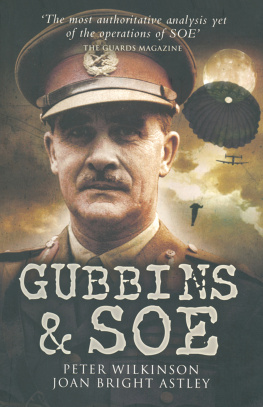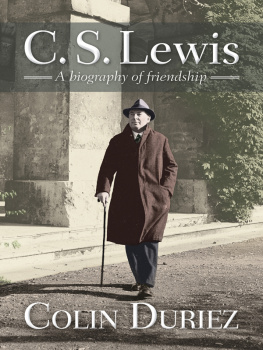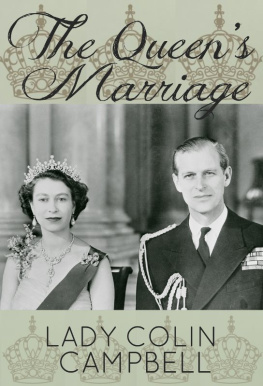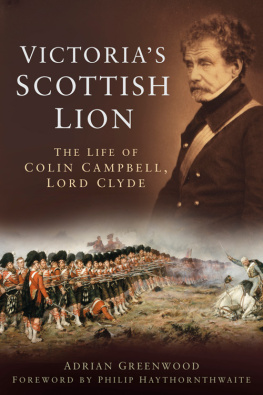Astley Joan Bright - Gubbins and SOE
Here you can read online Astley Joan Bright - Gubbins and SOE full text of the book (entire story) in english for free. Download pdf and epub, get meaning, cover and reviews about this ebook. year: 2010, publisher: Pen & Sword Military, genre: Non-fiction. Description of the work, (preface) as well as reviews are available. Best literature library LitArk.com created for fans of good reading and offers a wide selection of genres:
Romance novel
Science fiction
Adventure
Detective
Science
History
Home and family
Prose
Art
Politics
Computer
Non-fiction
Religion
Business
Children
Humor
Choose a favorite category and find really read worthwhile books. Enjoy immersion in the world of imagination, feel the emotions of the characters or learn something new for yourself, make an fascinating discovery.
- Book:Gubbins and SOE
- Author:
- Publisher:Pen & Sword Military
- Genre:
- Year:2010
- Rating:3 / 5
- Favourites:Add to favourites
- Your mark:
- 60
- 1
- 2
- 3
- 4
- 5
Gubbins and SOE: summary, description and annotation
We offer to read an annotation, description, summary or preface (depends on what the author of the book "Gubbins and SOE" wrote himself). If you haven't found the necessary information about the book — write in the comments, we will try to find it.
Gubbins and SOE — read online for free the complete book (whole text) full work
Below is the text of the book, divided by pages. System saving the place of the last page read, allows you to conveniently read the book "Gubbins and SOE" online for free, without having to search again every time where you left off. Put a bookmark, and you can go to the page where you finished reading at any time.
Font size:
Interval:
Bookmark:
GUBBINS AND SOE
Also by Joan Bright Astley:
History of the Northumberland Hussars Yeomanry, 19291949
(Mawson, Swan & Morgan, 1949)
The Ninth Queens Royal Lancers 19361945 (Gale & Polden,
1951)
The Inner Circle: a view of war at the top (Hutchinson, 1971)
GUBBINS AND SOE
by
Peter Wilkinson
and
Joan Bright Astley

First published in Great Britain in 1993
and reprinted in 1997 by
LEO COOPER
Reprinted in this format in 2010 by
Pen & Sword Military
an imprint of
Pen & Sword Books Ltd
47 Church Street
Barnsley
South Yorkshire S70 2AS
Copyright Peter Wilkinson and
Joan Bright Astley, 1993, 1997, 2010
ISBN 978 1 84884 421 6
The right of Peter Wilkinson and Joan Bright Astley to be identified
as authors of this work has been asserted by them in accordance
with the Copyright, Designs and Patents Act 1988
A CIP catalogue record for this book is
available from the British Library
All rights reserved. No part of this book may be reproduced or transmitted
in any form or by any means, electronic or mechanical including
photocopying, recording or by any information storage and retrieval
system, without permission from the Publisher in writing.
Printed and bound in England
by CPI Antony Rowe, Chippenham, Wiltshire
Pen & Sword Books Ltd incorporates the imprints of
Pen & Sword Aviation, Pen & Sword Maritime, Pen & Sword Military,
Wharncliffe Local History, Pen & Sword Select,
Pen & Sword Military Classics and Leo Cooper,
Remember When, Seaforth Publishing and Frontline Publishing
For a complete list of Pen & Sword titles please contact
PEN & SWORD BOOKS LIMITED
47 Church Street, Barnsley, South Yorkshire, S70 2AS, England
E-mail: enquiries@pen-and-sword.co.uk
Website: www.pen-and-sword.co.uk
To Jo
(Major-General J.C.F. Holland, CB, DFC)
CONTENTS
ACKNOWLEDGEMENTS
This book has no academic pretensions. Wherever possible references and attributions have been checked. However, a narrative of this nature depends greatly on personal knowledge, private information. Some readers may find that scant attention, or none, has been paid to events in which they personally took part, or to which they attached special importance; but this is not a history of SOE but the story of Colin Gubbins.
An inestimable debt is owed to Professor Michael Foot and Professor David Stafford who blazed their separate trails through the tanglewood of European Resistance. Special thanks are also owed to Christopher Woods, until recently the Foreign Office Adviser on SOE. At the time of writing the authors had no access to SOEs secret papers; and it was only thanks to Mr Woods tireless research that it proved possible to recreate events which happened half a century ago.
The authors wish to thank Lady Gubbins for allowing them to see Sir Colins papers, and members of his family who supplied information about his early years. Their thanks are also due to John Andrews, Librarian, Ministry of Defence, the late Jack Beevor and to Mary, his wife, who volunteered to transcribe the first draft of the present book; and to Colonel Andrew Croft, Sir William Deakin, Professor David Dilks, Sir Douglas Dodds-Parker, General Sir David Fraser for access to his fathers account of the Norwegian Campaign, Dr Jsef Garliski, Professor Ben Pimlott, Sir Brooks Richards and many others who contributed their knowledge. Above all our thanks to Vera Long, a founder member of SOE, whose help in preparing the book has been of the greatest value.


There is little doubt that in the Second World War SOEs influence was considerable both in exacerbating the tension, battle and unrest endemic in most of the Occupied countries, but also, some would say, in eroding the limits of warfare still generally respected in 1939. However, there exists no satisfactory assessment of the contribution made by the Resistance to the Allied victory. Subjective estimates are numerous and vary considerably; moreover, in retrospect, things are apt to appear more orderly than they seemed at the time. However, most agree that in purely military terms resistance was of secondary importance and in no sense decisive. Nevertheless, it was not negligible: at one time the Balkan guerrillas contained more Axis divisions than the Allied armies in Italy, while guerrilla operations in North West Europe and South East Asia unquestionably facilitated the advance of the Allied armies which led ultimately to the enemys surrender. Nor is there agreement on the importance of the part played by SOE. Clearly, once the defeat of the Axis powers seemed certain and merely a matter of time, widespread insurgency in the Occupied countries was likely to develop. But to Gubbins it seemed no less certain that without outside coordination this valuable potential would be dissipated in clandestine activities of merely local significance. This view was shared by SHAEF and, in a report to the Combined Chiefs of Staff dated 18 July, 1945, General Eisenhowers deputies, Generals Morgan and Bedell Smith, gave it as their considered judgment that without the organization, communications, training and leadership which SOE supplied resistance would have been of no military value. It is no coincidence that the features singled out were those to which Gubbins had given his personal attention. Indeed, it is at least arguable that without Gubbins professional guidance SOE might have gone the way of Section D.
Dr Dalton cherished the idea of a Fourth Arm which would bring the enemy to its knees through subversion and propaganda, followed by a general rising of the working classes. Gubbins, on the other hand, was sceptical about what SOE and its agents could achieve on their own; he envisaged rather a paramilitary effort by indigenous resistance nourished and coordinated by SOE, acting not independently but under the operational direction of a theatre commander. It was a conception which involved transforming Baker Street from a civilian organization, geared primarily for sabotage, into a paramilitary headquarters with procedures compatible with those of regular troops. Nor was that all. In the early days SOEs country sections had been responsible for enlisting their own agents; these were mainly volunteers with dual nationality or foreign expatriates living in the United Kingdom who, after individual training, were sent in to the field where they operated directly under the country sections orders. By mid-1941 the supply of these persons was dwindling, and was in any case inadequate for the large-scale operations which Gubbins had in mind. Nor was he convinced that their minor acts of sabotage, unless very carefully targeted, justified in military terms the appalling civilian reprisals which they occasioned. More and more Gubbins became convinced that, generally speaking, resistance to be effective needed to be on a scale which could only be achieved in cooperation with the Allied governments and representative committees now established in London, several of whom were in contact with, if not in control of, patriot elements in their respective countries. If they would provide the men, SOE would train them, arrange for their despatch to the field and handle their radio communications thereafter. Such an arrangement was clearly of mutual benefit, but Gubbins displayed considerable diplomatic skill in establishing the confidence required to bring it about. The Poles were no problem, for he already had many Polish friends including General Sikorski; and he soon established almost equally close relations with the Norwegians and the Dutch. Even the dour Czechs came to refer to him as our Englishman. The facilities which SOE had to offer, and the practical advice which he was able to give these Allied leaders, both formally and more often informally, gave Gubbins a unique standing in Allied circles which in turn aroused jealousy and criticism in Whitehall. Yet, looking back, Gubbins unpopularity in some military circles seems inexplicable. However, it was recognized by Lord Selborne in the following letter dated 17 October, 1945, which he wrote privately to the Secretary of State for War, recommending that Gubbins, when he relinquished his appointment as CD, should be made a substantive instead of merely a temporary major-general:
Next pageFont size:
Interval:
Bookmark:
Similar books «Gubbins and SOE»
Look at similar books to Gubbins and SOE. We have selected literature similar in name and meaning in the hope of providing readers with more options to find new, interesting, not yet read works.
Discussion, reviews of the book Gubbins and SOE and just readers' own opinions. Leave your comments, write what you think about the work, its meaning or the main characters. Specify what exactly you liked and what you didn't like, and why you think so.







